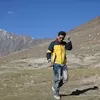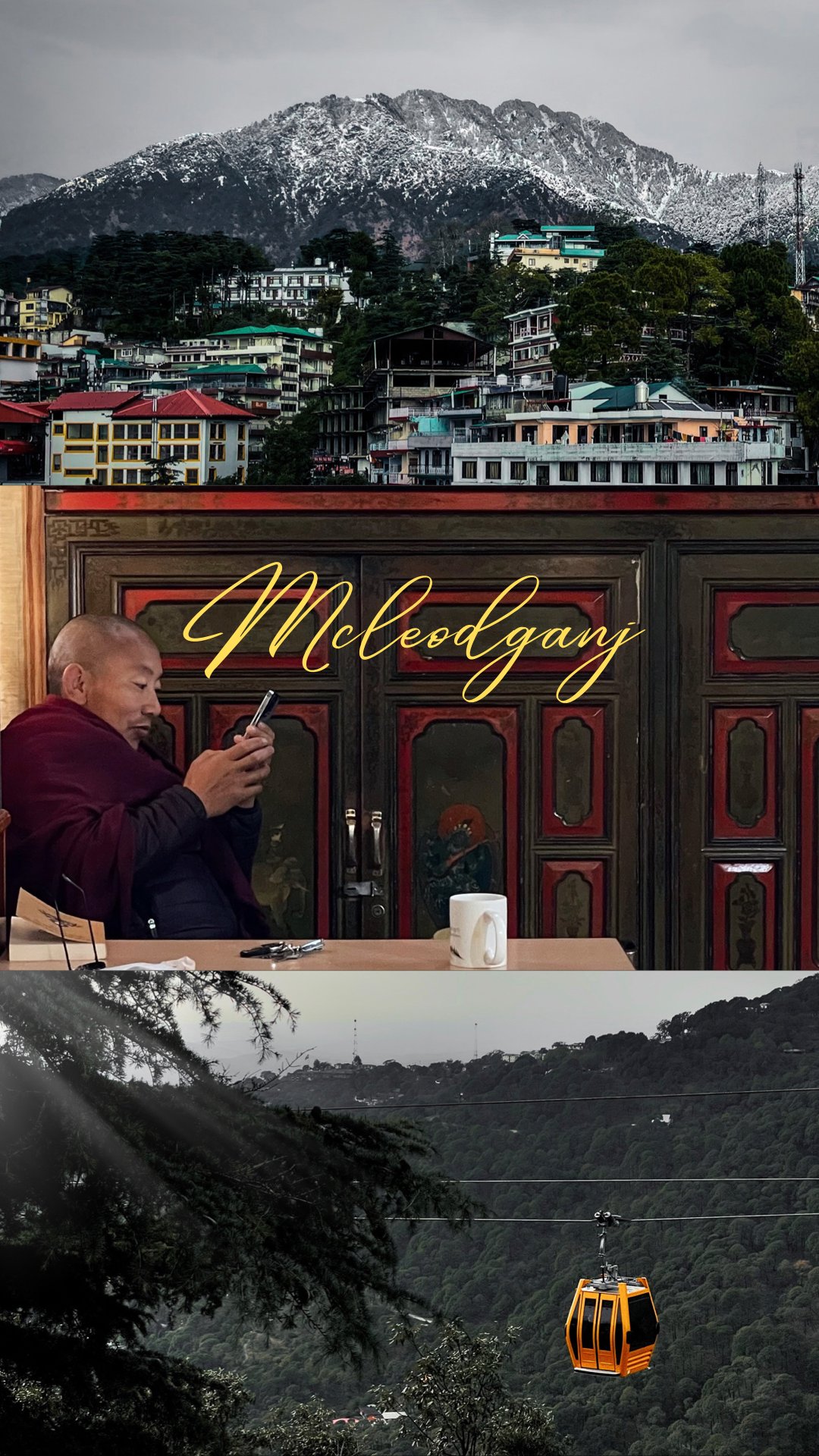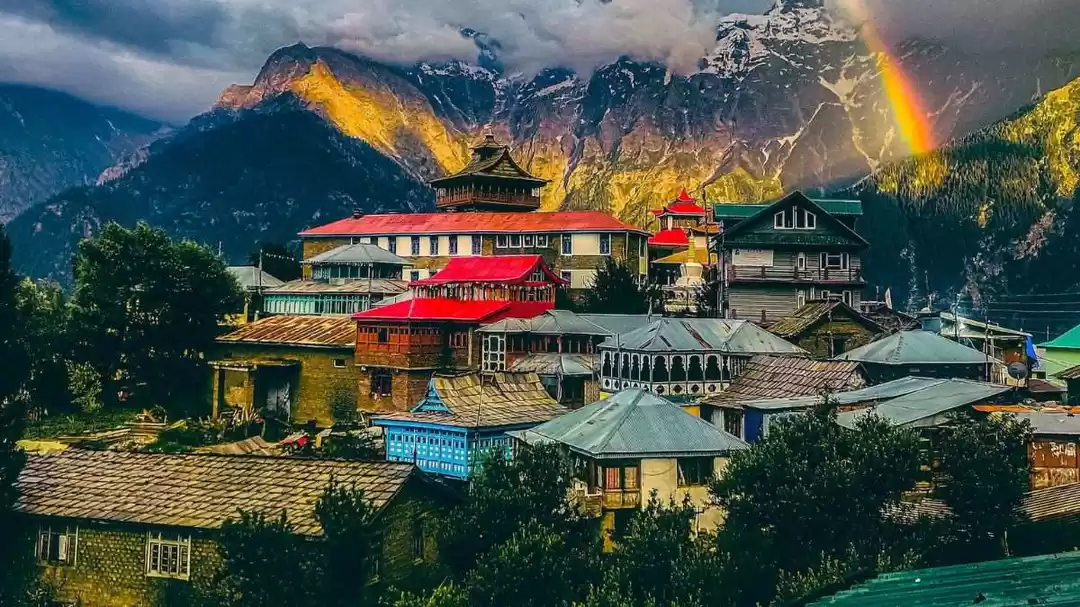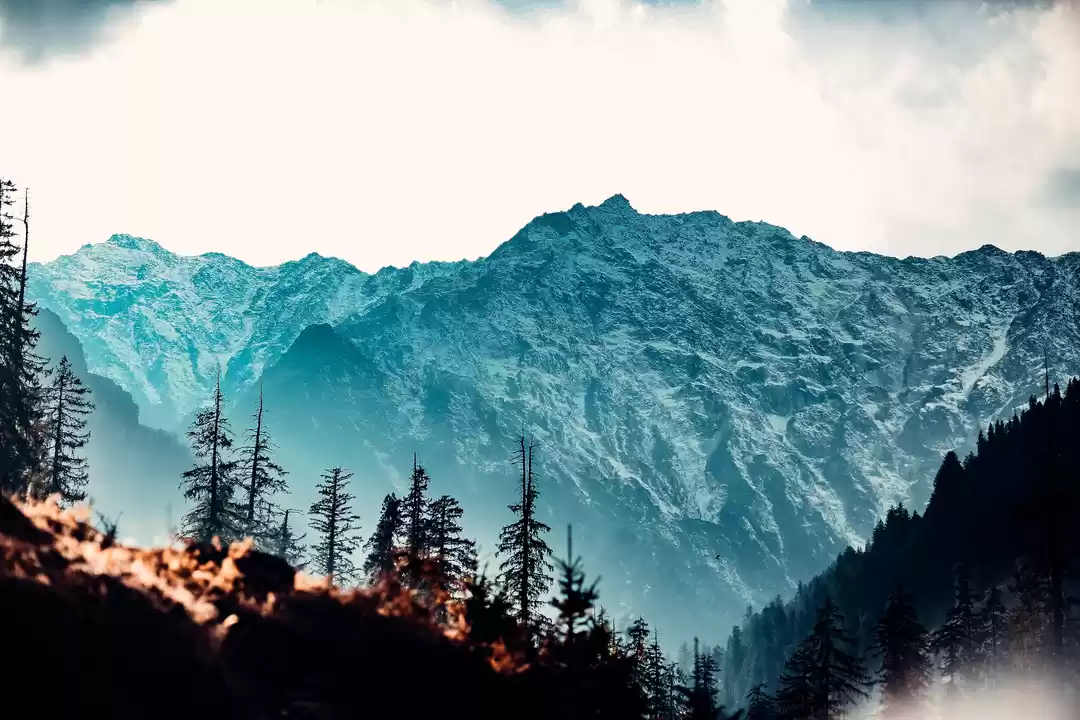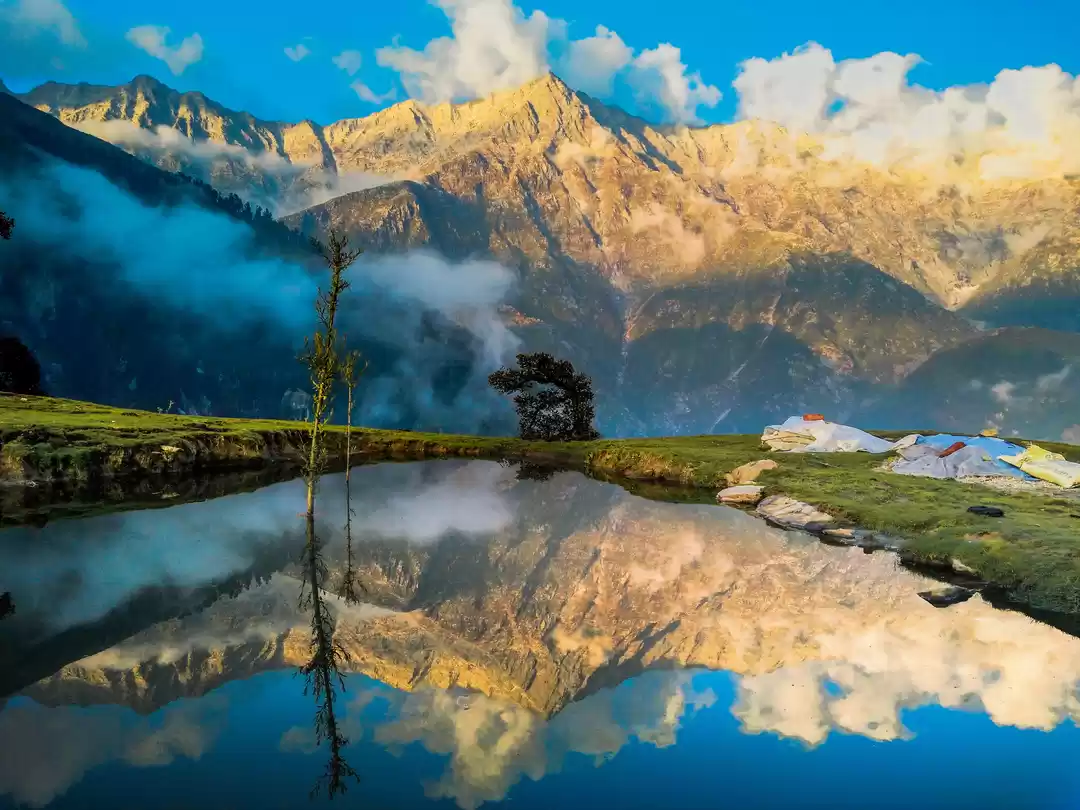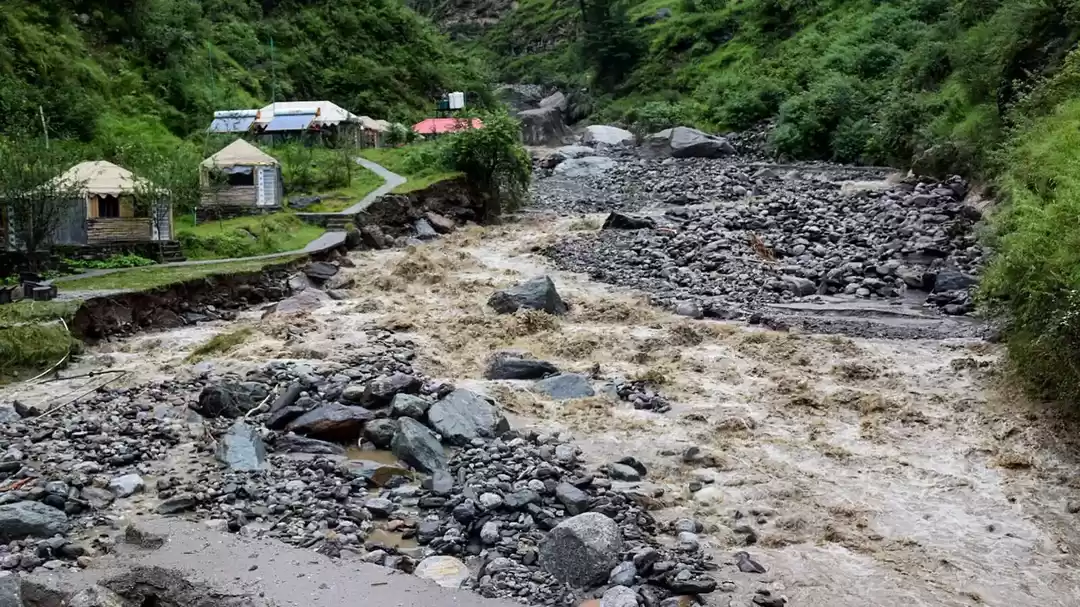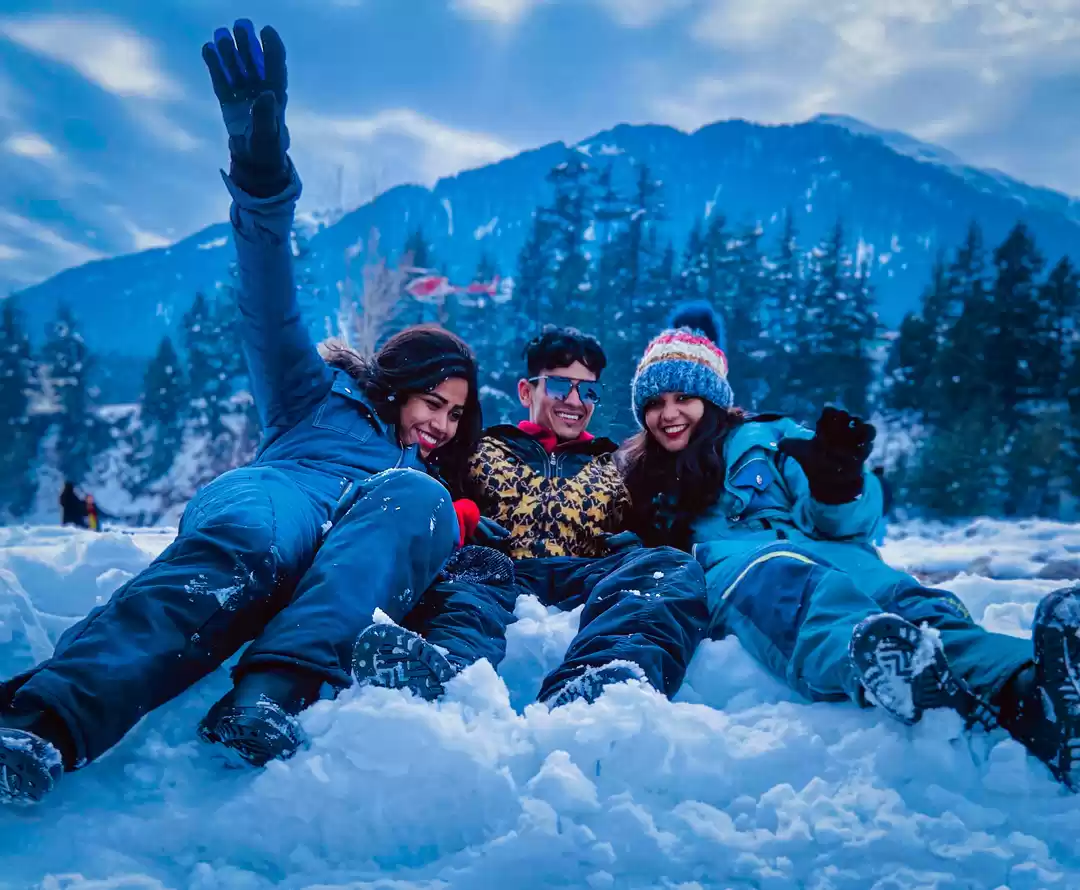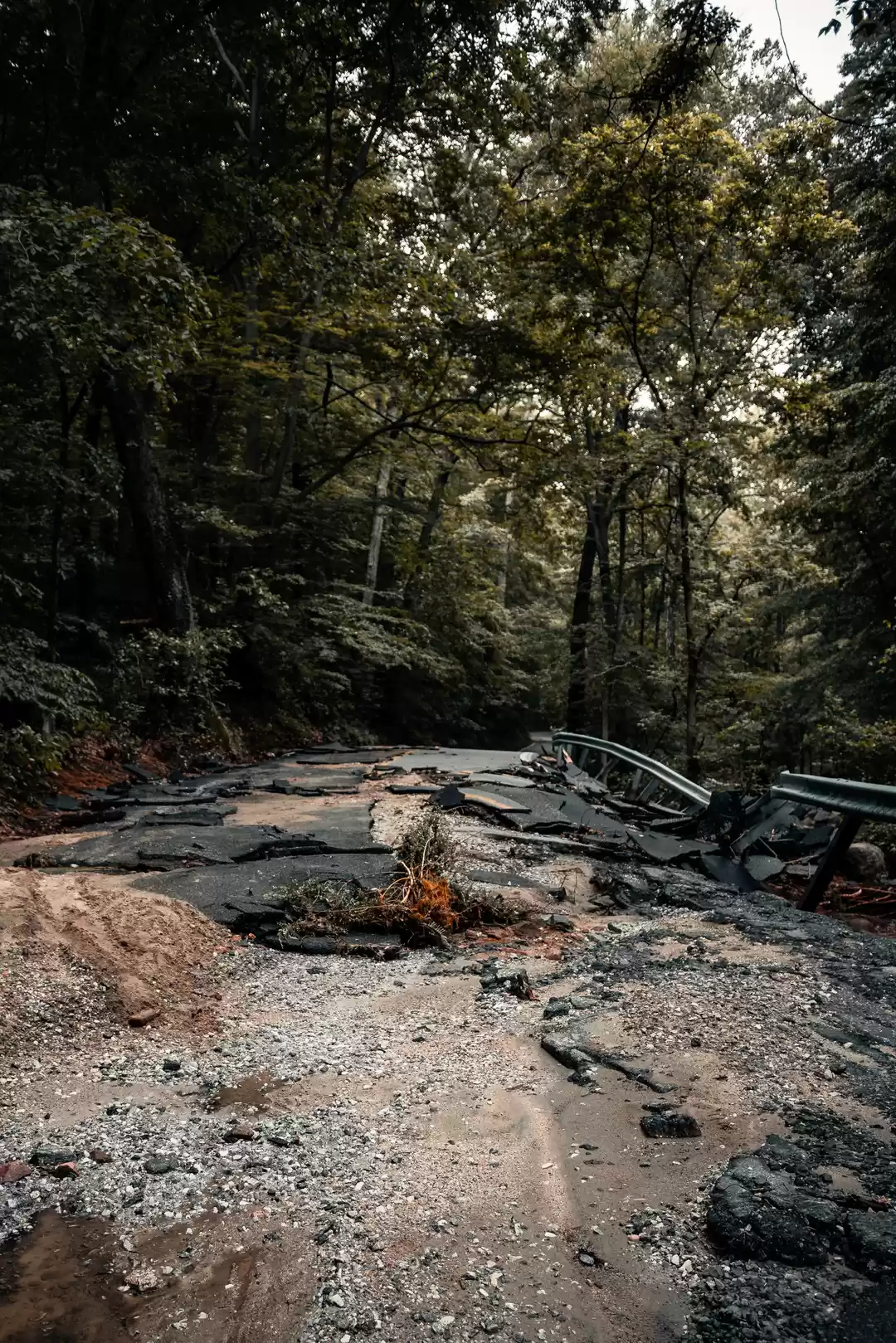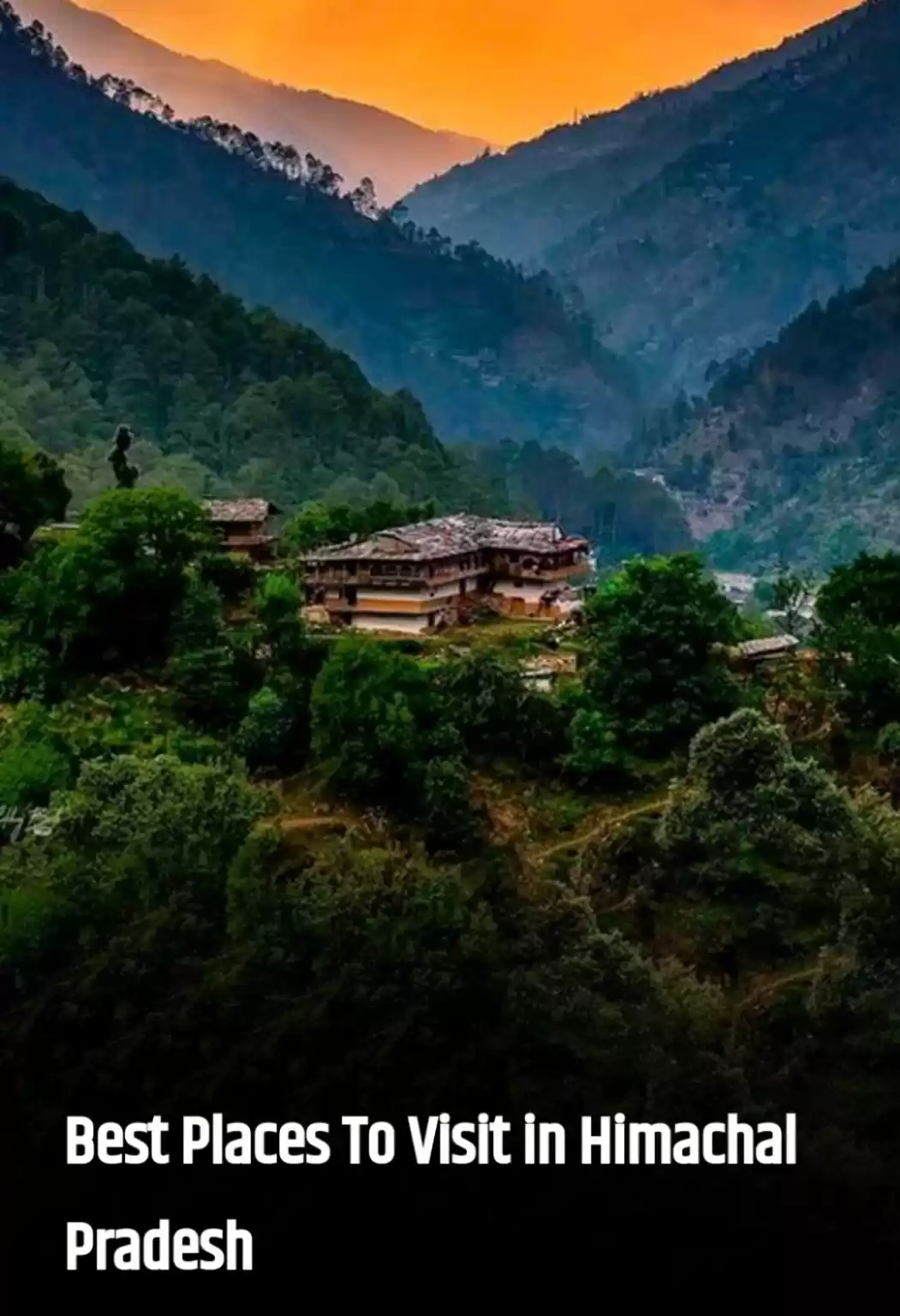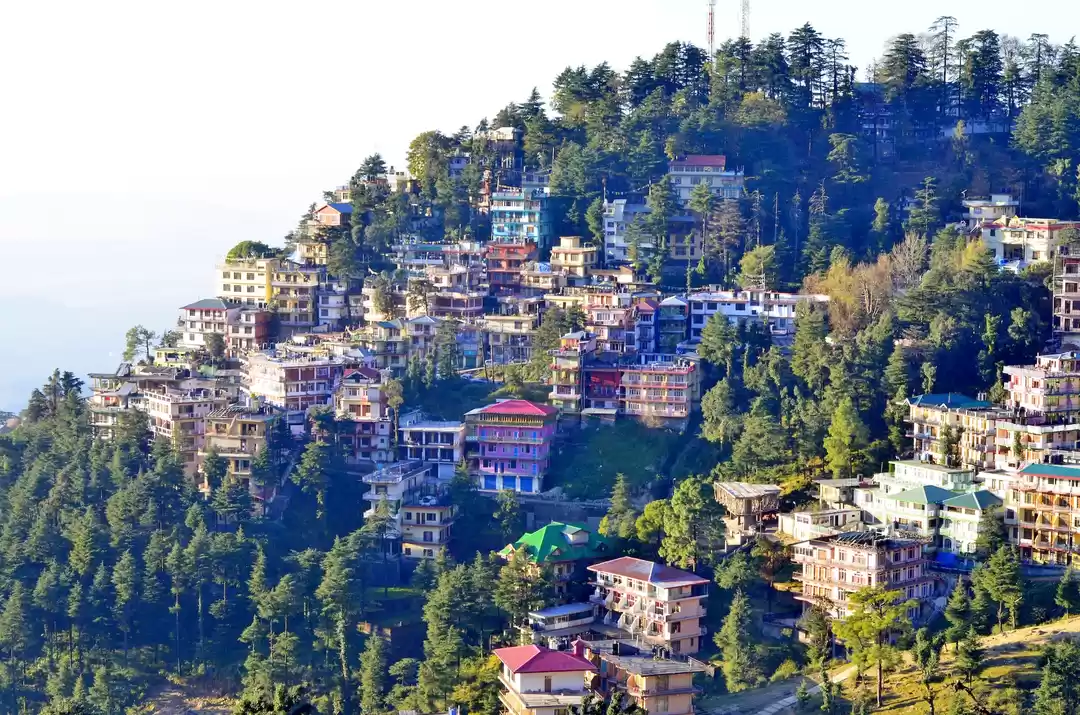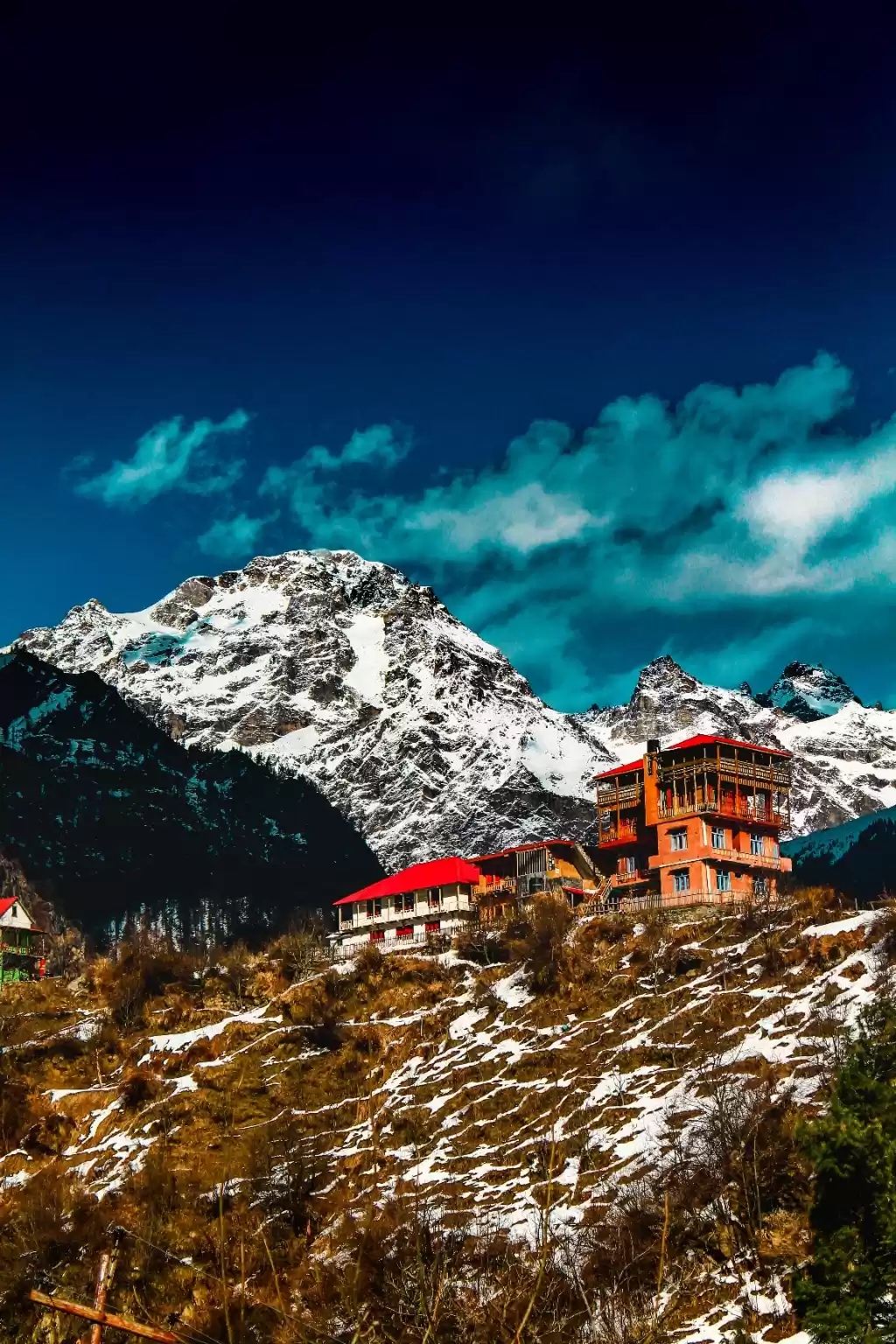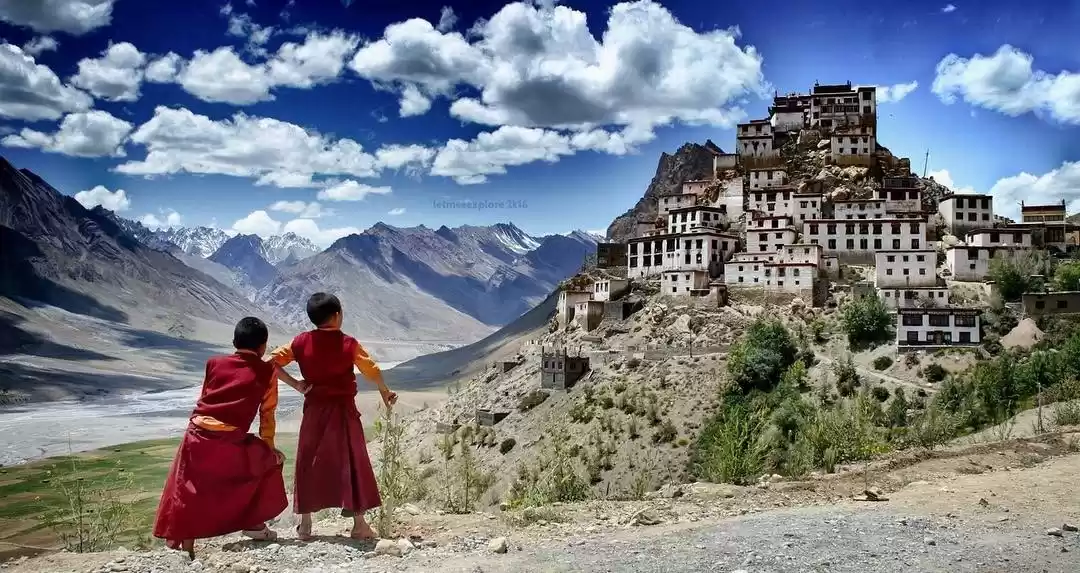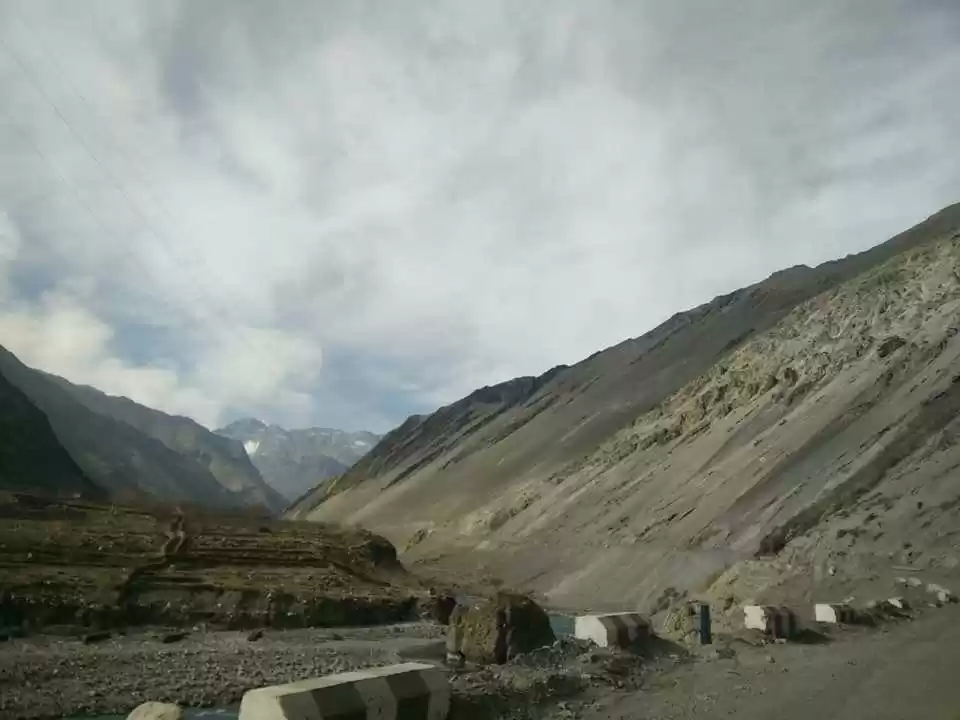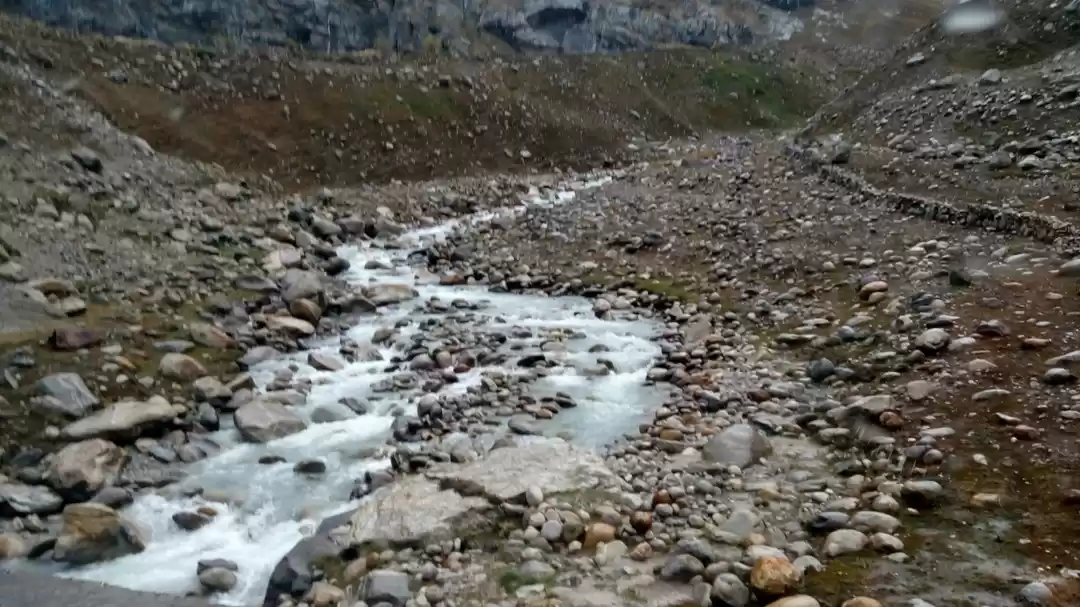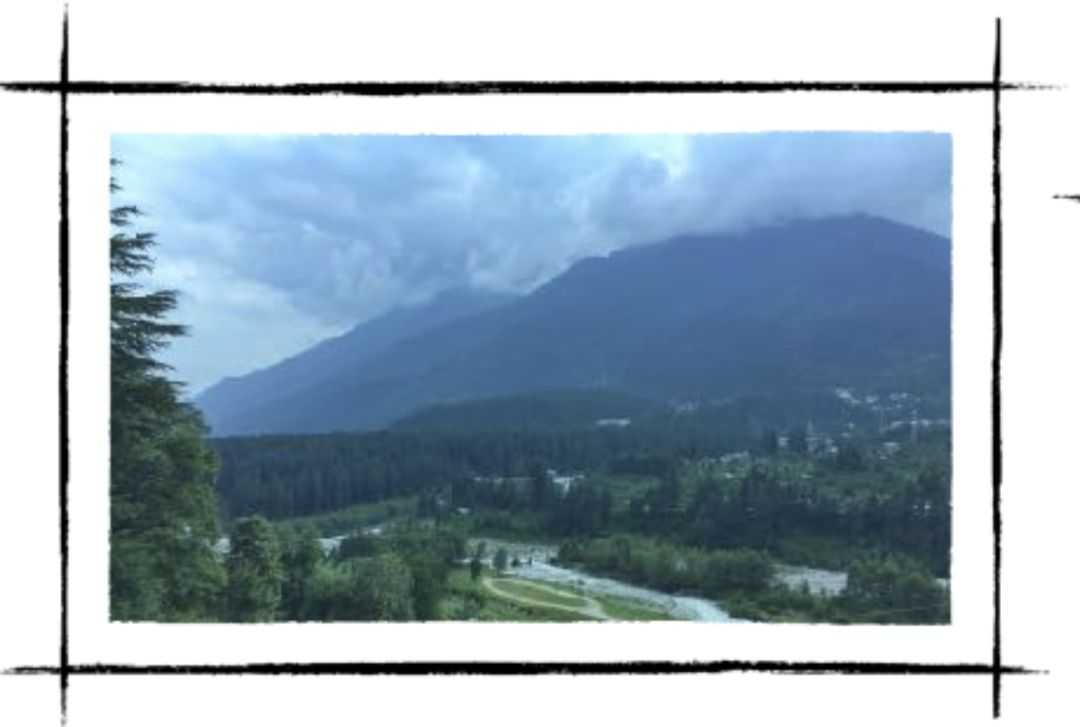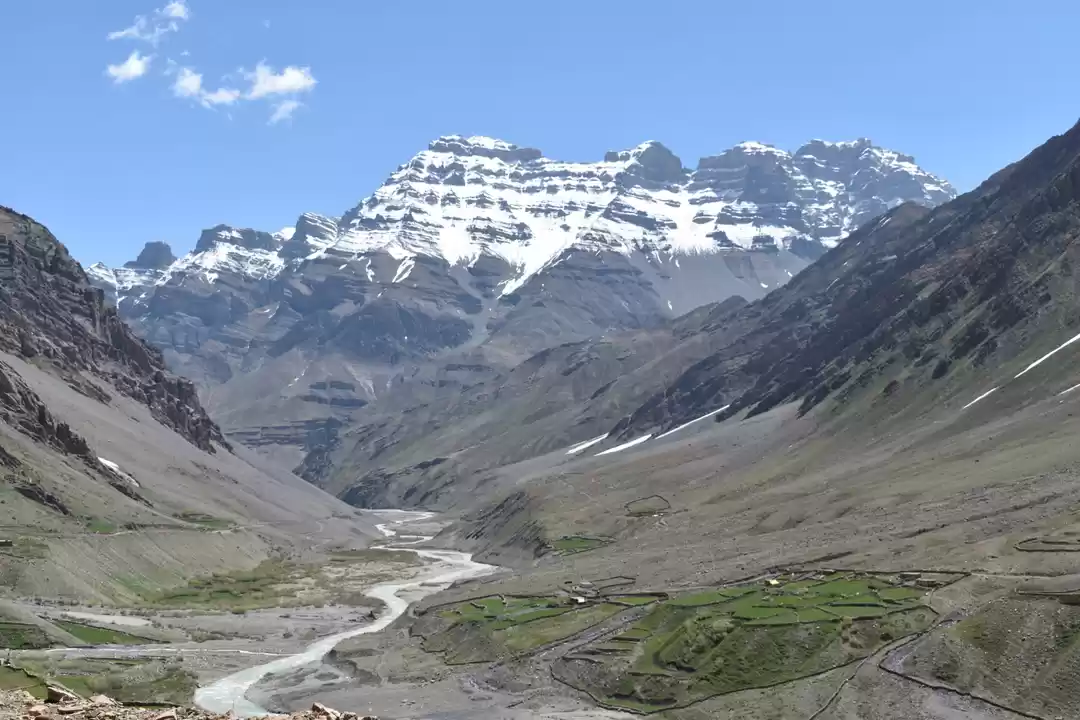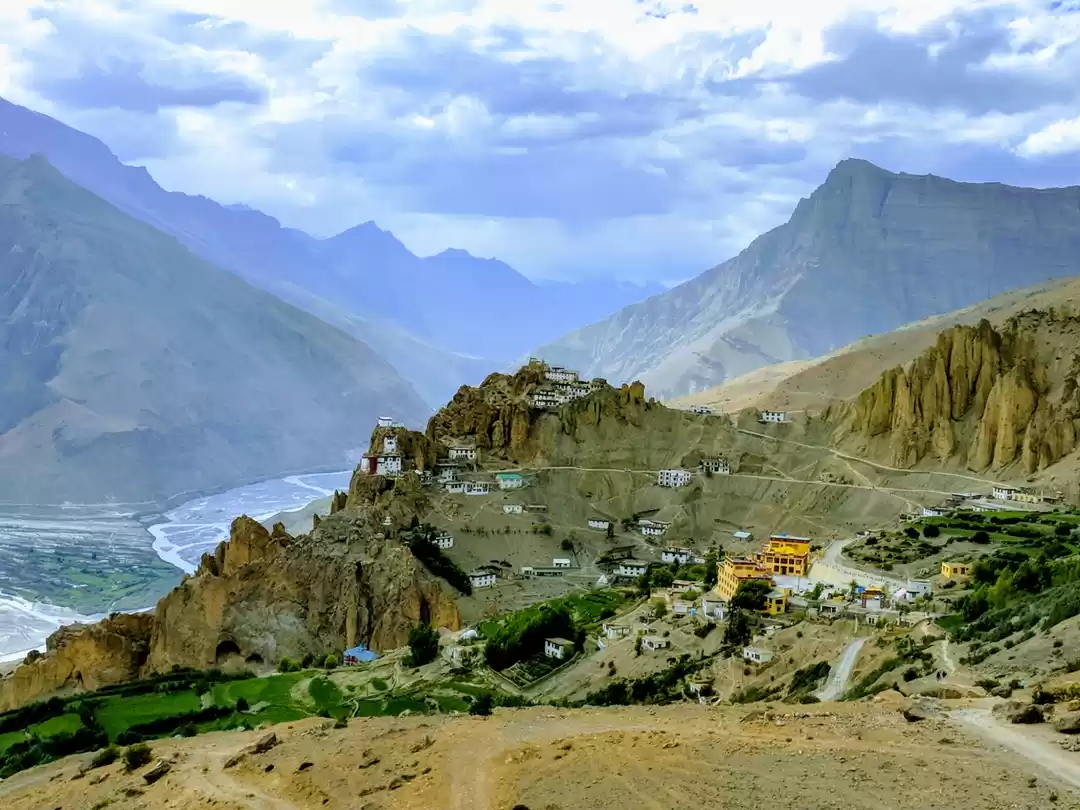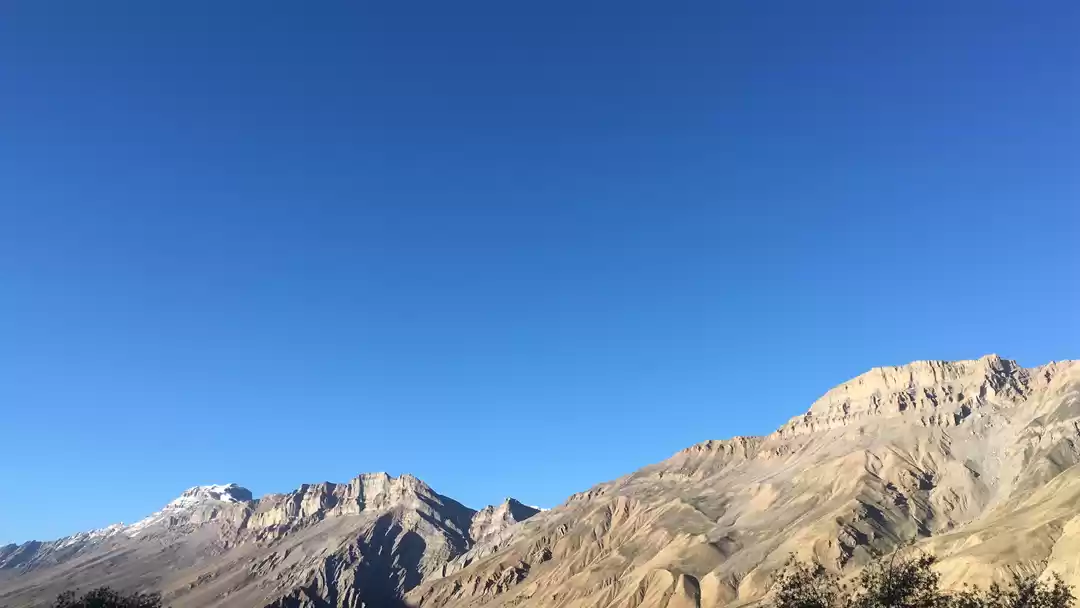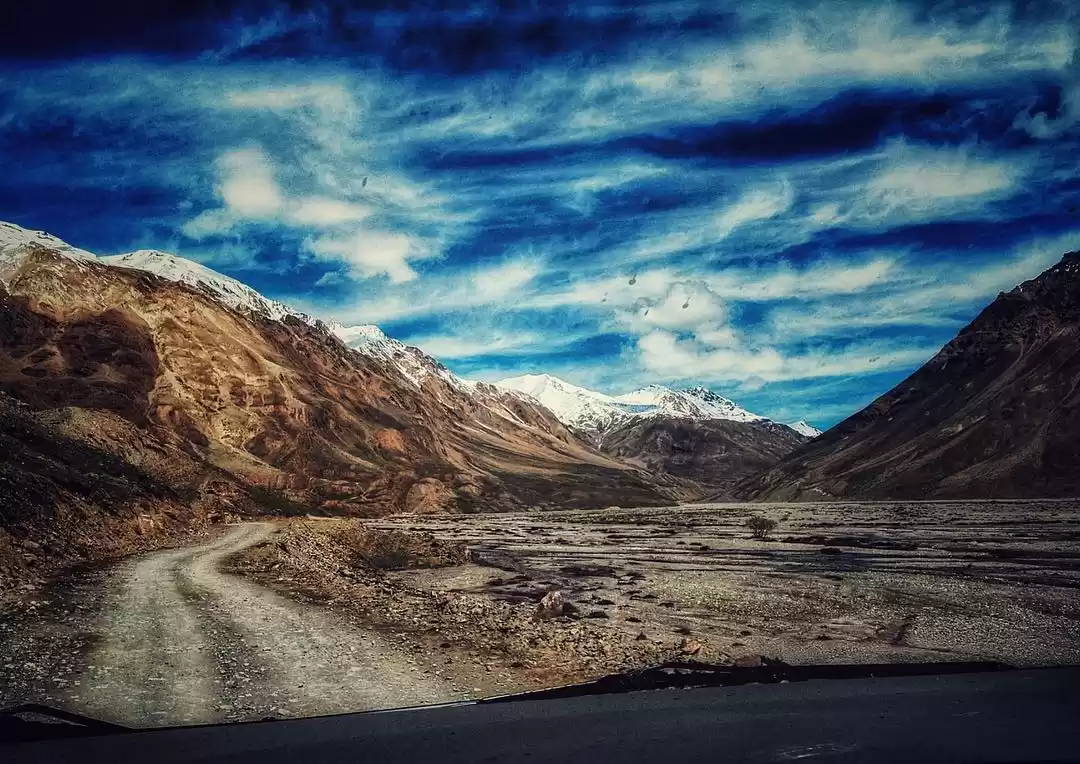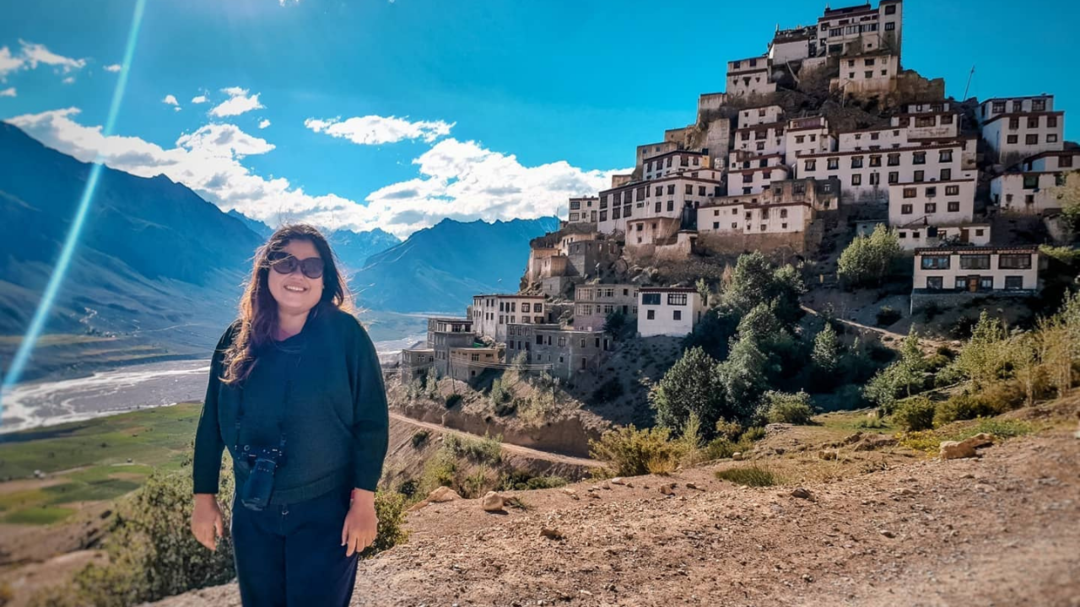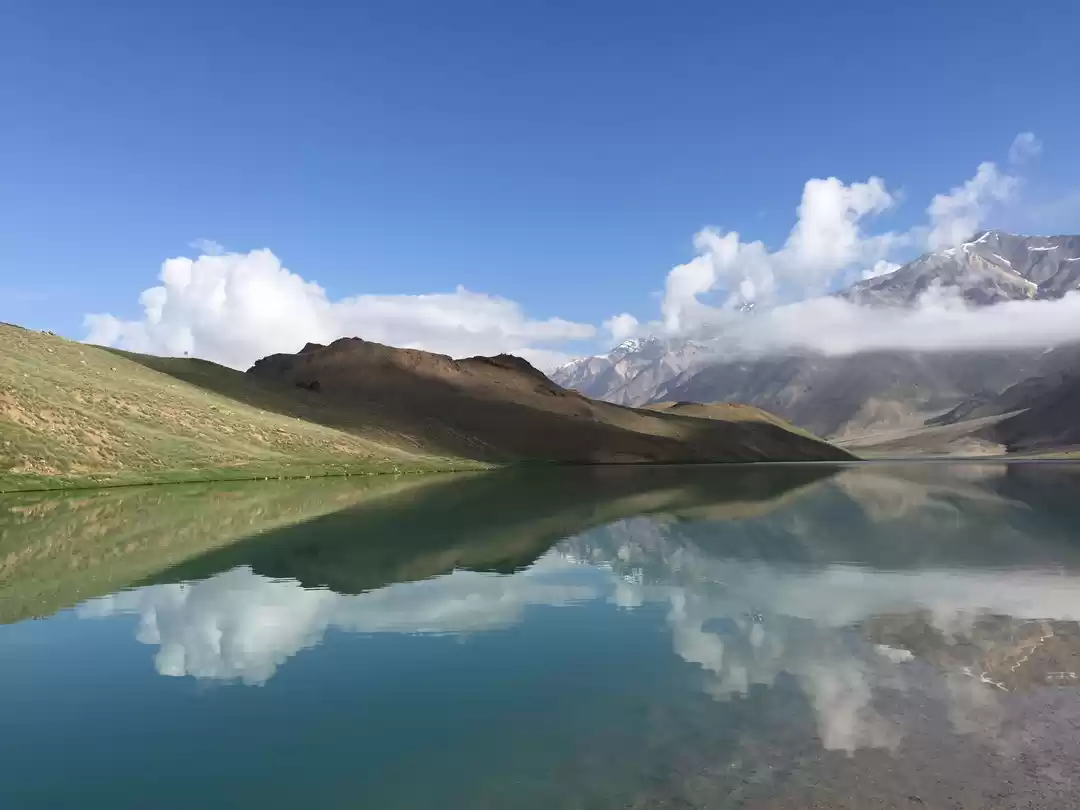Spiti Valley lays in a remote pocket of India’s Himalayas. Tibetan prayer flags billow in the wind, strung along trees, bridges, and roadside shrines. Snowy peaks dot the skyline. Villages are few and far between, and many are only accessible by foot. This isn’t Tibet, however. This is India at its wildest. This Spiti Valley itinerary breaks down what to see and do in this incredible region of India
ITINERARY:
Day 1: Delhi to kalka to shimla via toy train
Day 2: Drive to Reckong Peo via satluj river and kinnaur
Day 3: Drive to Mudh via Kungri Monastery
Day 4: Drive to Tabo via Dhankar
Day 5: Drive to Langza via Demul, Hikkim, and Komic
Day 6: Drive to Kaza via Key Monastery
Day 7: Drive to Chandratal Lake
Day 8: Drive to Batal kashmir
Day 9: Drive batal to Manali
Day 10: Drive Manali to Delhi
Transportation Options:
Self-Driving
Due to the rough, unsealed mountain passes you must traverse throughout this itinerary, I do not recommend self-driving in Spiti Valley. Erratic weather and rain bursts can result in dangerous landslides, and the distance between villages means that if something goes wrong, you’re on your own.
Motorcycle
That said, traveling Spiti Valley by motorcycle is incredibly popular. If you do wish to drive a motorcycle through Spiti Valley, I recommend joining a small group with a guide, like this option.
Public Bus:
Public buses connect most of the towns in Spiti Valley, but they do not have the most reassuring safety record. They are known to be overcrowded and drivers may be tired and overworked. That said, it’s a cheap option, and as more tourists plan their itineraries through Spiti Valley, bus services are becoming a more viable option. For more information, check out this detailed guide on bus services in Spiti.
Private Driver:
This is the option we chose for our Spiti Valley itinerary, and it is easily the one I would recommend. Private drivers are familiar with the roads, connected with other drivers via satellite phones (great for sharing info on road conditions), and it is not as expensive as you might think. We booked our driver, meals, activities, and accommodations through a single tour company and for this entire Spiti Valley itinerary, we only spent $500 USD per person (excluding flights to/from Bhuntar/Kullu).
There are several tour companies you can book through. I recommend finding one that has a strict no-alcohol policy for the drivers. It is unfortunately common for drivers to not only drink in the evenings between driving days but sometimes even during the drive itself. The attitude towards drinking and driving is not as negative in India as it may be in your home country, so make sure to ask about this before you book to ensure your safety.
Getting to Spiti Valley
There are daily 1 hour flights to Bhuntar from Delhi (round trip about $300 USD). From there, it is about an hour and a half drive to Manali.
You can also take an overnight bus from Delhi to Manali for about $25 USD each way. The drive takes at least 13 hours, and you will be in for some long drives once you start your itinerary in Spiti Valley. For this reason, I recommend flying. However, depending on how you look at it, you may want to take the bus since it is a lot cheaper and hey, what’s one more day on the road?
Accommodation in Spiti Valley
Every destination in this Spiti Valley itinerary has a variety of guesthouses and small hotels you can stay in. All have options that include breakfast and dinner. I have included the accommodations where we stayed in each destination in the day-by-day guide below.
Other Logistics
Bring enough cash with you on your trip. ATMs are few and not always stocked.
All of Spiti Valley is at high altitude. Talk to your doctor before traveling about this best options for you for mitigating altitude sickness.
Make sure you pack layers for the ever-changing weather and plenty of sunscreens.
There is no wifi or cell phone reception in Spiti Valley.
In order to visit Tabo, you will need an Inner-Line Permit. Because Spiti Valley is ethnically and culturally Tibetan, you are essentially visiting Tibet, but without crossing the official border. The permit can be arranged in Kaza. The process is a little complicated and inconsistent, but you can ask the folks at your accommodation for help if needed. In the meantime,
Spiti Valley Itinerary Day-By-Day
Day 1: Fly Delhi to Bhuntar/Kullu, drive to Manali
Take an early morning flight from Delhi, arriving at Bhuntar/Kullu around 9am. From here, meet with your driver and proceed to Manali.
We stayed overnight at Rohtang Heights. This hotel sits up on a hill overlooking the city and surrounding mountains. The food was delicious and the bed super comfy. We highly recommend this hotel.
Day 2: Drive to Kaza via Rhotang and Kunzum Passes – 12 hours
The drive from Manali to Spiti Valley is a long one! Expect the journey to take about 12-13 hours.
On the drive to Kaza, the largest town in Spiti, you will traverse two high mountain passes, Rohtang (3980 meters) and Kunzum (4550 meters). Be sure to stop for a few photos among the Buddhist stupas and prayer flags set amid the stunning scenery, which is just a glimpse of what is to come.
There are a few small villages along the drive where you can stop for a cup of hot masala chai and a bite of basic but delicious food.
In Kaza, I recommend visiting the Sakya Tangyud Monastery right in town and the markets.
We stayed overnight in Hotel Deyzor. The rooms are bright and comfy, and the food is absolutely delicious. Even if you don’t end up staying here, you should definitely eat here.
As mentioned before, Kaza is also where you can obtain your Inner Line Permit. This permit is required for visitors traveling to certain parts of Spiti Valley that lay within a small region just before the Tibet border. The process to obtain it should be straightforward, but in practice, it’s a little complicated.
The forms and copies of your passport can be obtained from a copy shop, but you actually file the forms in a dark unmarked conference room in the town hall. There seems to be some ambiguity about the number of copies of things you need, as different travelers we met there stated they needed different things. A few people had to go back and forth between the two buildings before getting it straightened out. Bring at least 2 passport photos, expect a little bit of chaos, and go with the flow. The process should take about an hour.
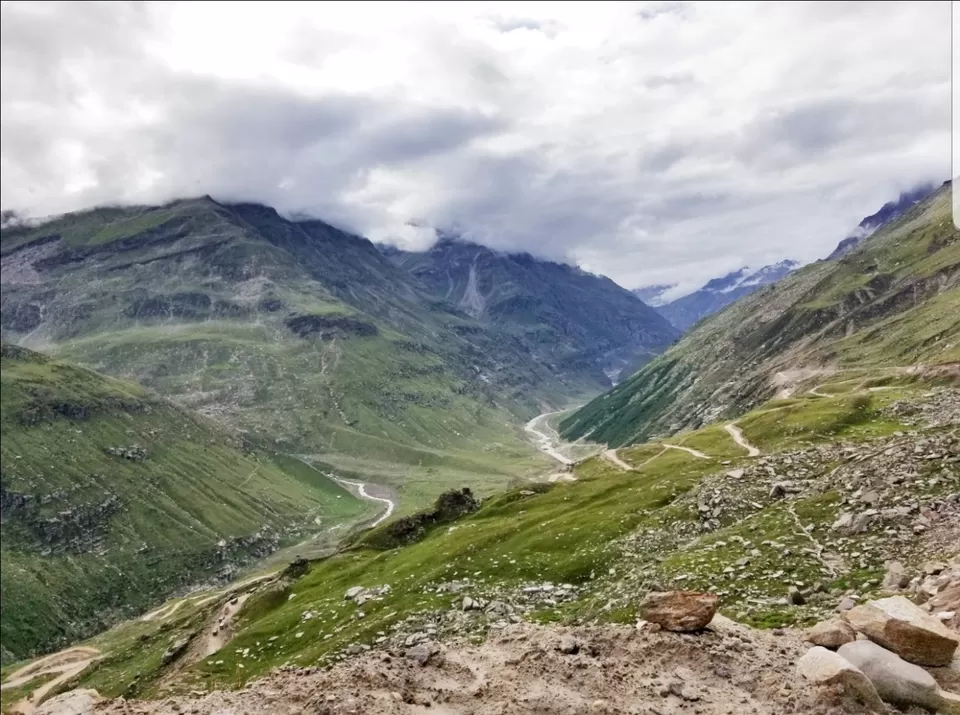
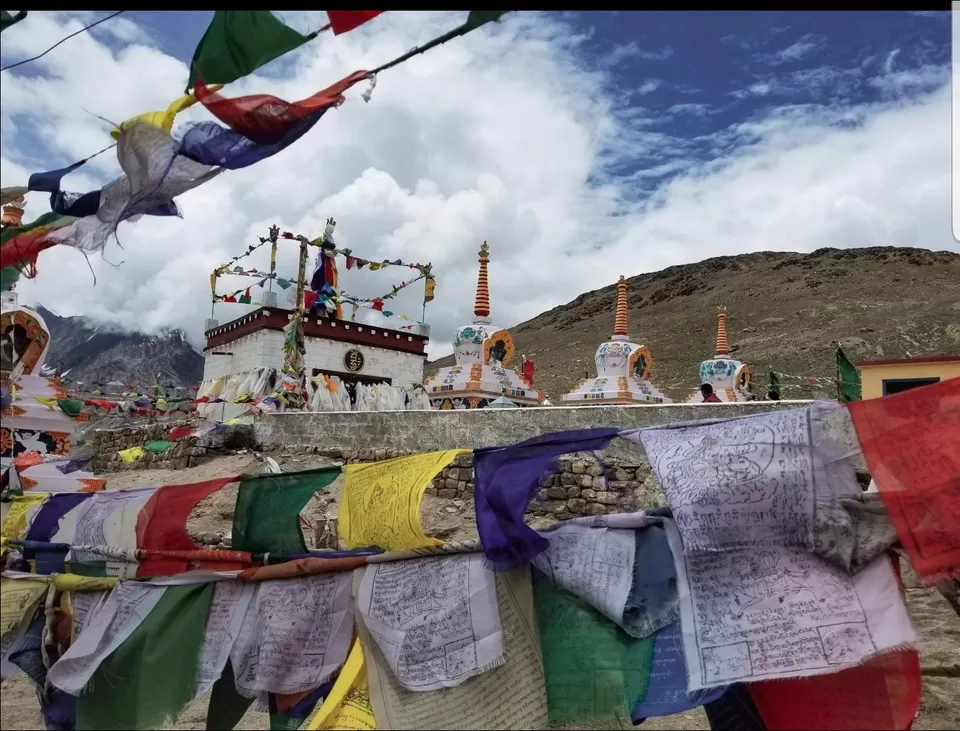
Day 3: Drive to Mud via Kungri Monastery – 2 hours
From Kaza, proceed to Pin Valley National Park. Along the way, stop at the 1300-year-old Kungri Monastery.
Today’s short drive is particularly scenic. Stop to take photos, marvel at bridges, and keep your eyes open for wildlife.
Arrive in Mud in the afternoon. This was my favorite town in Spiti Valley. It is supremely picturesque, set right in Pin Valley amid fields of wildflowers. There are plenty of walks you can take from town. Just follow the paths into the valley and feel free to explore. Of course, talk to a local about routes before you head out for safety.
If you have more time, I think Mud is a great place on our Spiti Valley trip to spend a second night before continuing on with this itinerary.
Pin Valley is also home to snow leopards. They are incredibly rare to see any time of year, especially the summer. That said, more tour operators are organizing winter trips to spot them.
We stayed at Tara Guesthouse Pin Valley. The rooms are cozy, and the family that runs the accommodation is very kind. Their homestyle restaurant serves up very tasty food. If peas are in season, make sure you have some. They also have a delicious “Tibetan Pizza” on the menu made with local yak cheese. I’m still thinking about it…
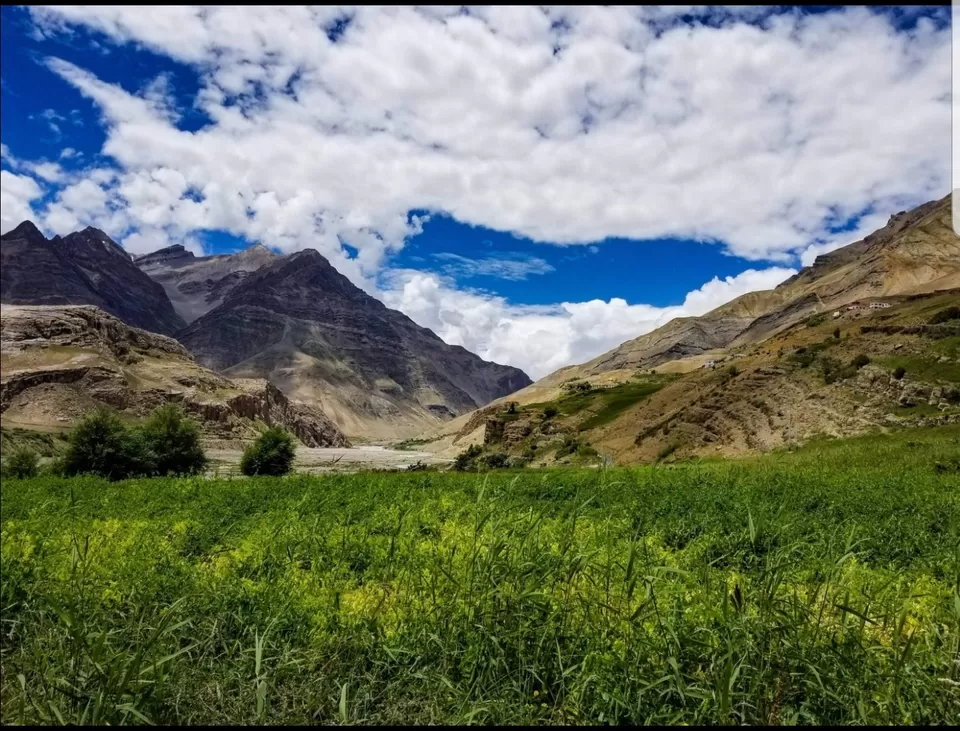
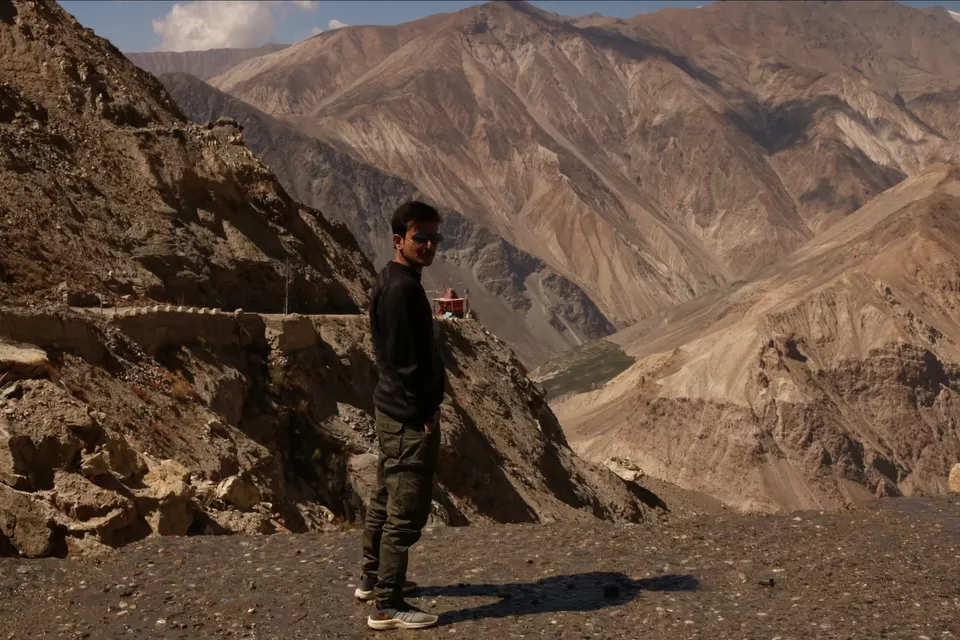
Day 4: Drive to Tabo via Dhankar – 4 hours
From Mudh, you’ll leave Pin Valley behind and drive to Dhankar for a visit. This is another place you could spend the night to break up the trip between Mudh and Tabo and give yourself more time in each location.
Dhankar was another favorite spot of mine in Spiti Valley. Explore the ancient 1000-year-old monastery built into the mountain, and then hike the 2-hour return trail to Dhankar Lake. The climb is steep and some may find it challenging. The serene and quiet lake, plus the views from the top overlooking the mountains, make it well worth it.
Continue on to Tabo. You will need to pass through a checkpoint where you will show that Inner Line Permit you got in Kaza.
In Tabo, do not miss the Tabo Monastery. This is the main reason to come here at all. The Tabo Monastery was founded in 996 AD and is likely the oldest continually running monastery in India. Several mud-walled shrines are open to visitors. Shoes and cameras are forbidden inside, partly out of respect and partly to preserve the millennium-old wall murals inside. These paintings absolutely wowed us. They were so bright and colorful, and blended Tibetan, Indian and Kashmiri styles. It’s dark, cool and dry inside each shrine, which is probably why the paintings are in such great condition.
Inside the main assembly hall, 28 life-size sculptures of deities line the walls. Few photos exist of this place, but I did find one via Getty Images.
We spent the night at the Maitreya Regencyhotel. This was probably the most upscale accommodation we had in Spiti Valley, and it’s conveniently located right in front of the monastery.

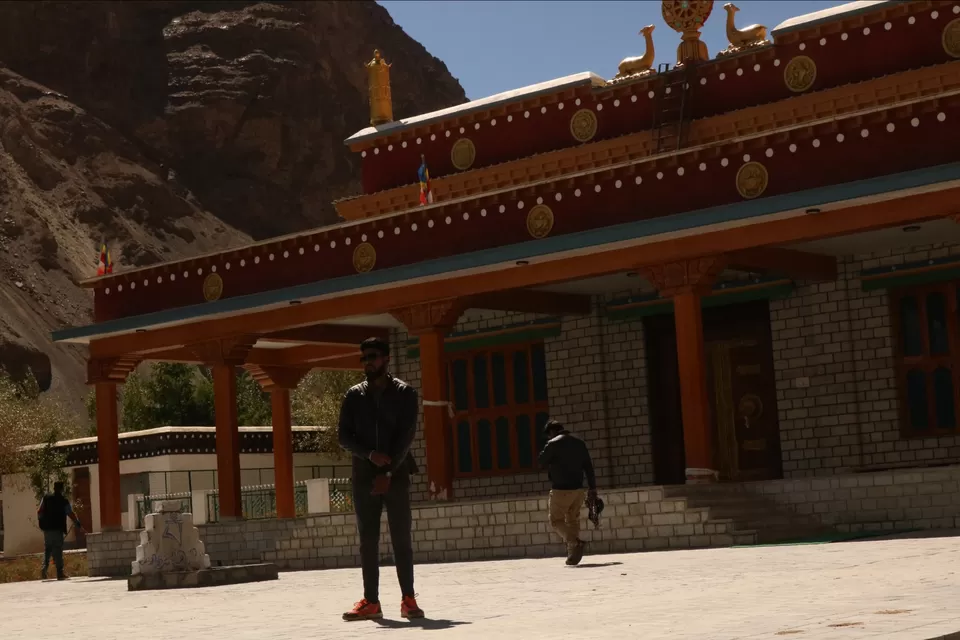
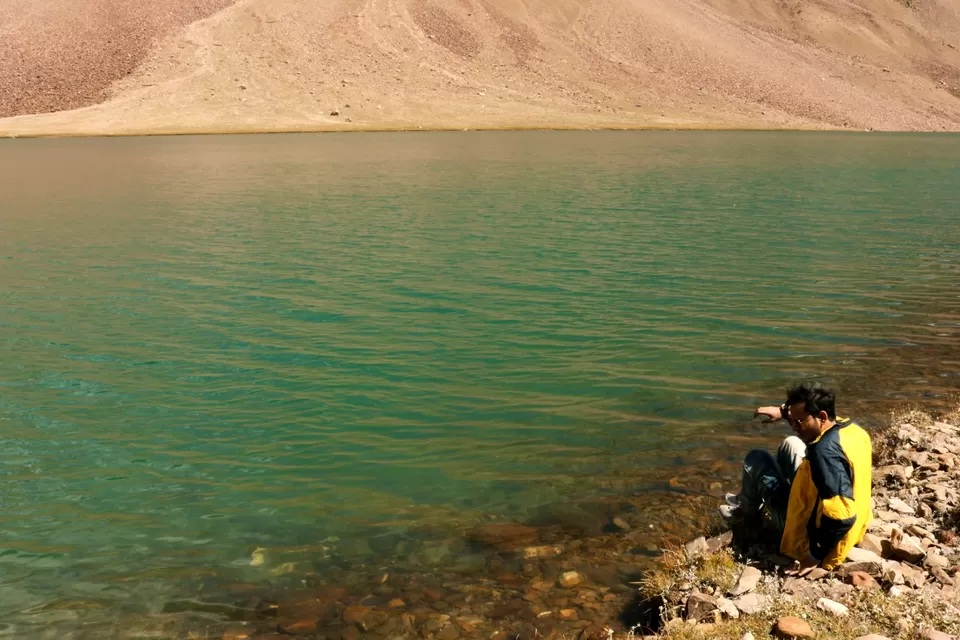
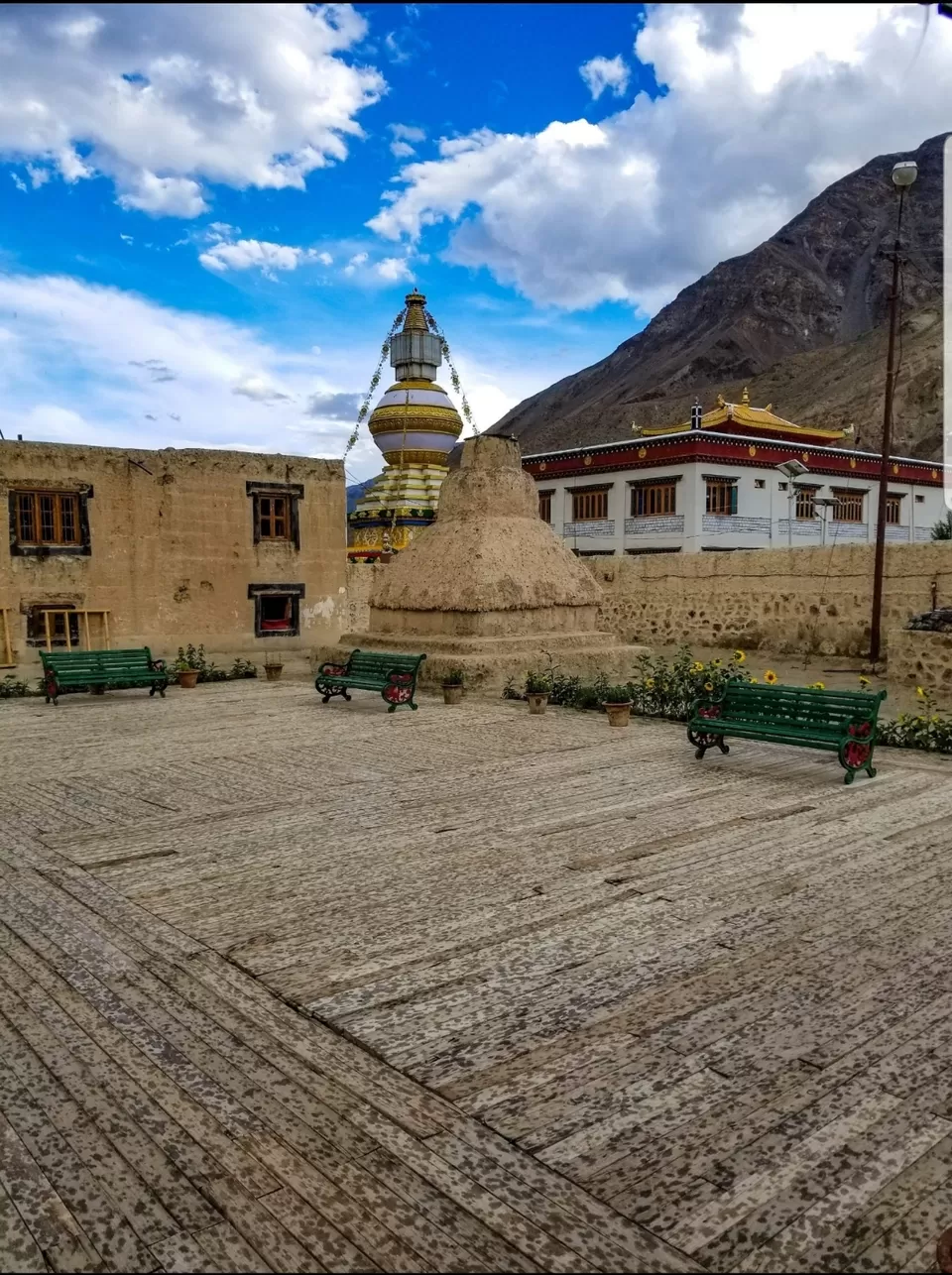
Day 5: Drive to Langza via Demul, Komic, and Hikkim – 4 hours
Today is a fun road trip day, as you will get to visit a few small villages that each offer something different.
Ask your driver to take you to the Palangri Mountain (4990 meters) trail near Demul. This little-known hike is a hidden gem and great to get a quick climb to the top of a mountain overlooking the valley. We counted 30 glaciers that we could see. The trail is much less steep than the Dhankar Lake hike, until the last portion when it becomes steep as well as narrow. This hike should take about 2 hours round trip.
After your hike, proceed to Komic, which claims to be the highest village in the world with a motorized road. This probably isn’t technically true thanks to a slightly higher village in Bolivia, but at 4587 meters, it’s still very impressive!
From Komic, stop by Hikkim, home of the world’s highest post office.
After Hikkim, continue to Langza for the night. Langza is famous for its abundance of prehistoric sea-life fossils. Millions of years ago the Himalayas didn’t exist and the land was underwater. When the Indian sub-continent collided with Asia, the mountains formed and the fossils were pushed up to the tops of mountains.
Don’t miss the giant Buddha statueoverlooking the valley or the snow-capped peak of towering Mount Chau Chau Khang Nilda.
We spent the night at Lara’s Homestay.
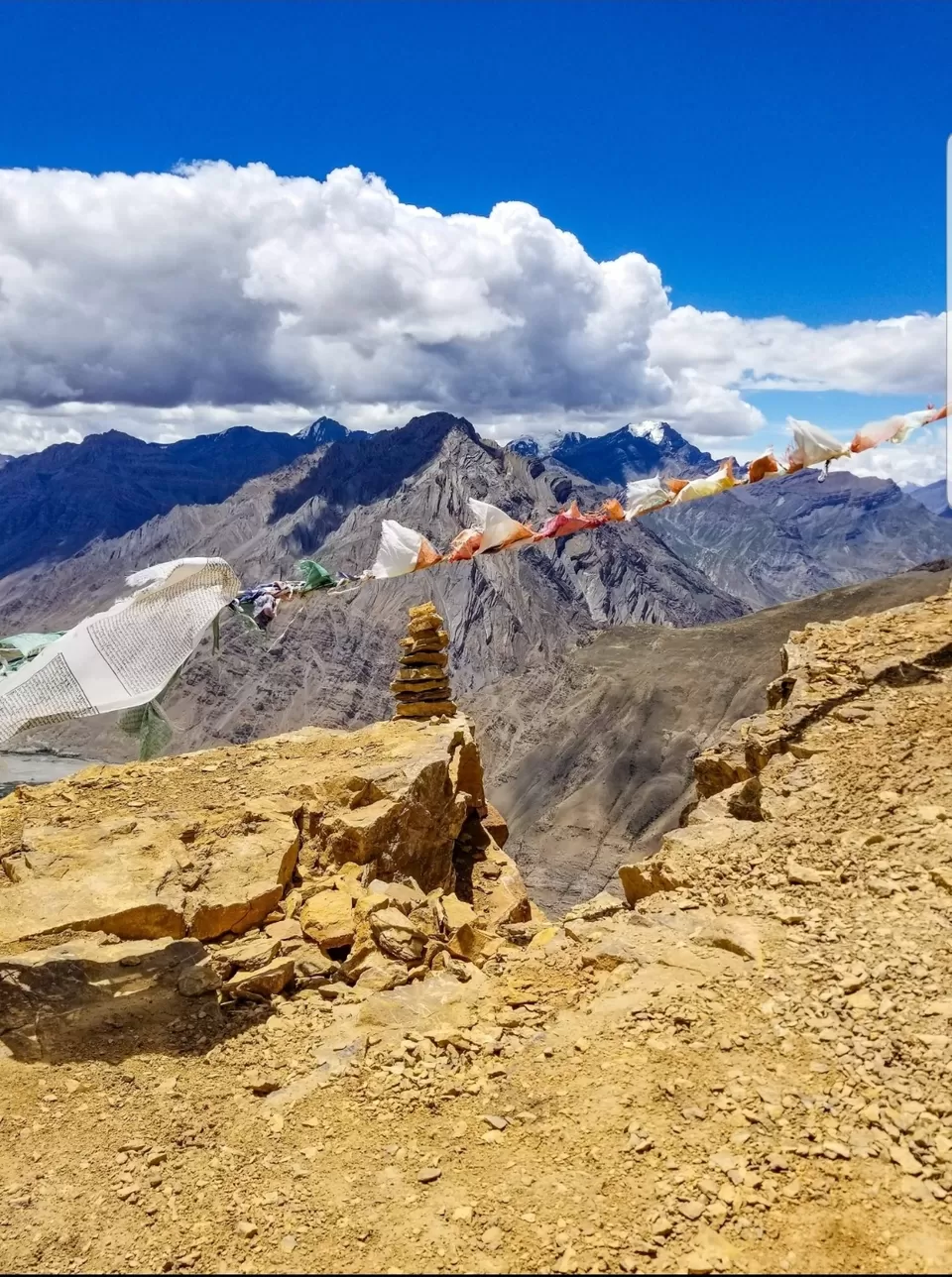

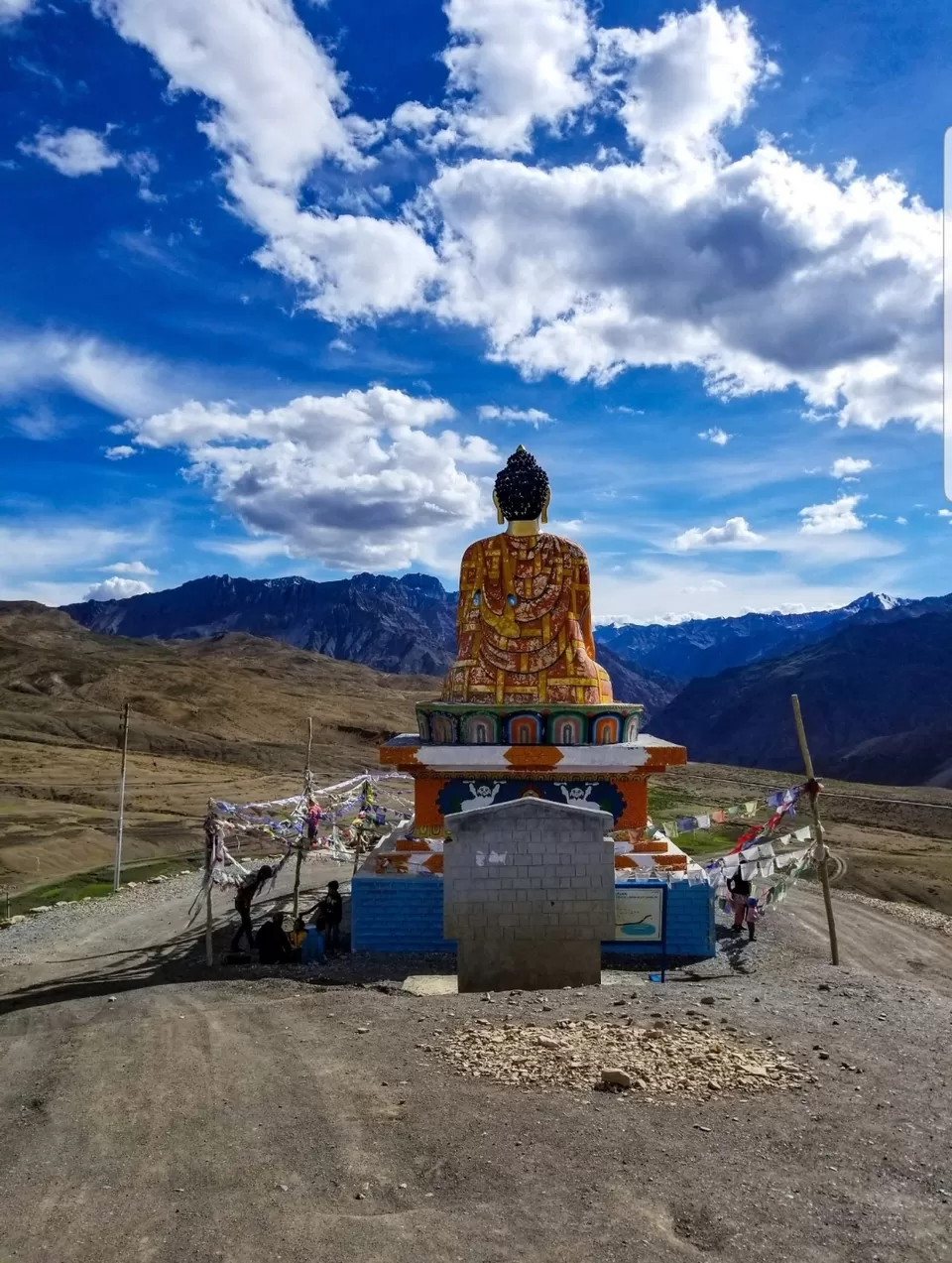
Day 6: Drive to Kaza via Key Monastery – 4 hours
Today, return back to Kaza. On the way, visit Key Monastery, the largest in Spiti. Visitors are free to roam around, and you may even meet a kind monk who will show you around and feed you candy and butter tea.
On our second stay in Kaza, we again stayed at the Hotel Deyzor.

Day 7: Drive to Chandratal Lake – 5 hours
From Kaza, you will travel to Chandratal Lakefor a night of camping or glamping in permanent tents with en suites. Take a 3-hour walk around the lake and then meet back in the communal tent for tea and dinner.
We spent the night at the beautiful glampsite Parasol Camps.
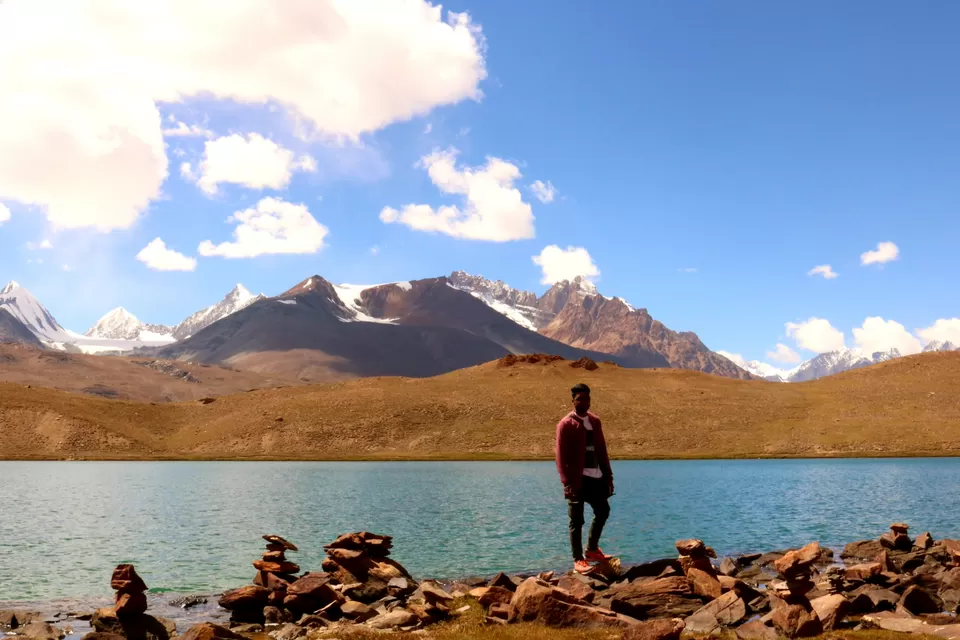
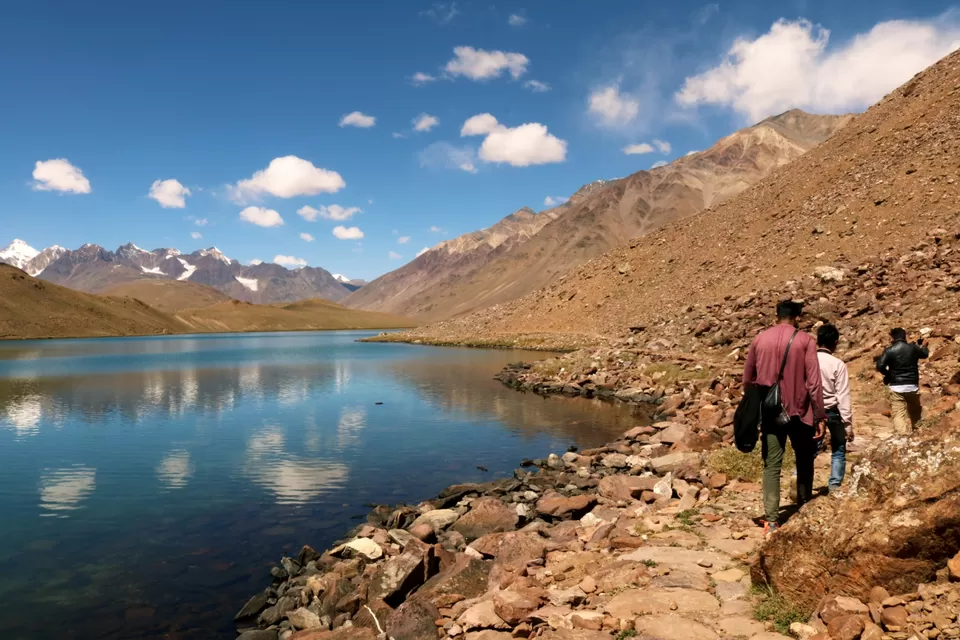
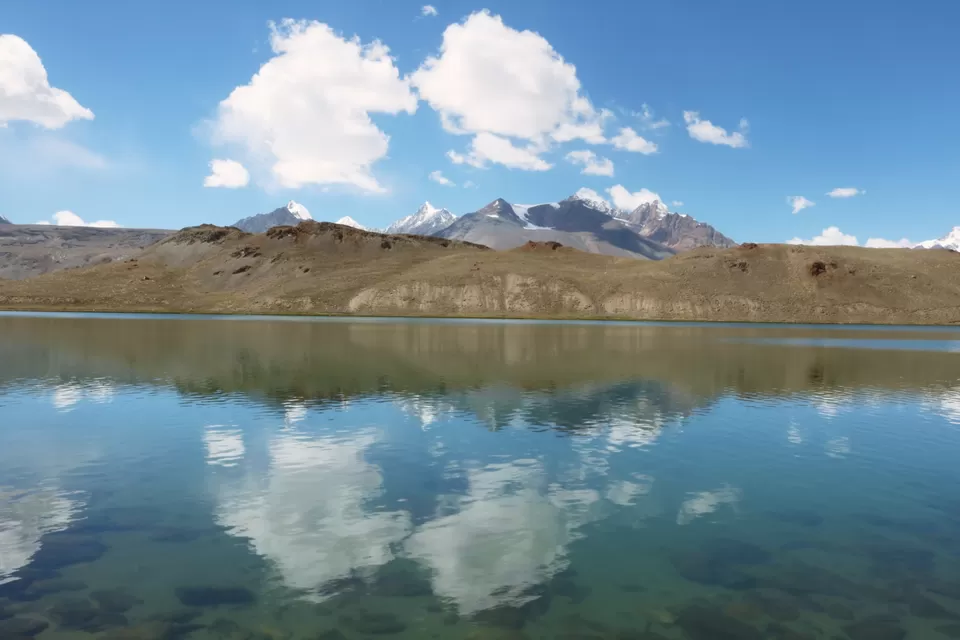
Day 8: Drive to Bhuntar/Kullu – 13 hours
On the last day of this itinerary through Spiti Valley, you will drive all the way back to Bhuntar/Kullu the same way you came. Again, expect the drive to take 13 or 14 hours.
We spent our last night at JJ Resorts, near the airport. We were not wildly impressed with this hotel and even had trouble arranging a taxi to the airport with them. In general, I would not recommend this hotel.
Day 9: Fly Kullu to Delhi
Fly out in the morning to return to Delhi and connect onward to your final destination!
I hope this Spiti Valley itinerary inspires you to visit this hidden gem in India! It’s a side of India few tourists see, and one well worth the effort! If you’re planning a trip to Spiti Valley, I’d love to hear from you! Just drop me a note in the comments below.

